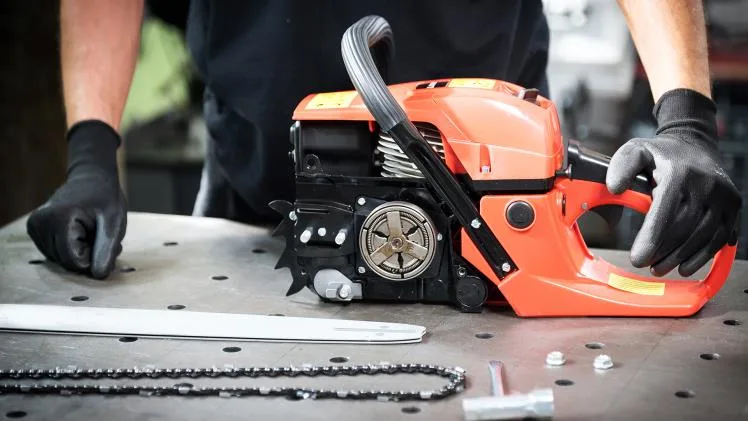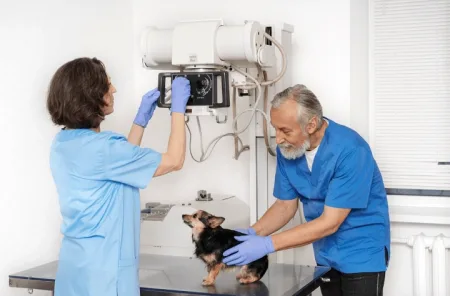When tackling heavy-duty outdoor tasks, a chainsaw is a trusty companion. From clearing fallen trees to pruning branches, it’s essential for any homeowner or outdoor enthusiast. However, proper maintenance is crucial to ensure your chainsaw remains effective and safe to use. So here, you can delve into the ins and outs of chainsaw chain maintenance, providing you with adequate knowledge and techniques to keep your tool sharp, reliable, and ready for action. Also, you should invest in quality chainsaw parts to ensure safety while operating them.
Understanding the Importance of Chainsaw Chain Maintenance
A well-maintained chainsaw chain improves cutting performance, making your tasks quicker and more efficient. Regular maintenance reduces the risk of kickback, ensuring your safety while operating the chainsaw. As such, it helps prolong the life of the chain, minimising the need for frequent replacements and saving you money. Best chainsaw chains are indispensable for arborists and gardeners for pruning tree branches and removing limbs. A sharp and durable chain allows for clean cuts, promoting better tree health and reducing the risk of disease.
The Common Enemies of Chainsaw Chains
- Dust, dirt, and debris can accumulate on the chain, clogging the cutting teeth and reducing its effectiveness.
- Improper lubrication can lead to excessive heat, friction, and premature wear of the chain.
- Dull or damaged cutting teeth can compromise cutting performance and pose safety hazards.
Step-by-Step Chainsaw Chain Maintenance
Cleaning the Chain
- Start by wearing protective gloves to shield your hands from sharp edges.
- You should use a stiff brush or an old toothbrush to remove debris, sawdust, and resin from the chain.
- Soak the chain in a mixture of warm water and dish soap for stubborn buildup, then scrub gently with the brush.
- Rinse the chain thoroughly and dry it before moving on to the next step.
Proper Chain Lubrication
- Ensure the chainsaw’s oil reservoir is filled with high-quality bar and chain oil designed for chainsaw use.
- Start the chainsaw and let it idle for a few moments to allow the oil to distribute evenly.
- Check the oil flow by holding the chainsaw near a light-coloured surface and revving the engine. You should see a fine, consistent oil spray.
- Now, following the manufacturer’s instructions, adjust the oil flow if necessary.
Sharpening the Chain
Dull cutting teeth make cutting tasks more challenging and increase the risk of accidents. So, use a round file and a filing guide to sharpen the chain’s cutting teeth at the recommended angle, usually between 25 and 35 degrees. You may work on one tooth at a time, maintaining consistent pressure and following the natural cutting direction of the tooth. Also, you must ensure the cutting teeth have the same length and are uniformly sharpened for optimal cutting performance.
Additional Tips for Chainsaw Chain Maintenance
Chain Tension Adjustment
A loose chain can jump off the guide bar, while an overly tight chain can strain the engine and increase wear. So you must check the chain tension regularly, follow the manufacturer’s guidelines, and adjust it as needed. Moreover, remember to loosen the guide bar’s side nuts before making tension adjustments and retighten them afterwards.
Regular Inspection and Replacement
You should inspect the chain regularly for signs of wear, damage, or excessive stretching. And if you notice significant damage, such as missing or broken teeth, deep gouges, or a stretched appearance, replace the chain. Likewise, keep spare chains on hand to ensure uninterrupted work and to have options for different cutting tasks. Having high-quality chainsaw parts is also unavoidable since it affects equipment safety.
Proper chainsaw chain maintenance is the key to keeping your tool in top shape, ensuring its reliability and longevity. By cleaning the chain, lubricating it correctly, sharpening the cutting teeth, and adjusting the tension, you can maximise cutting performance, enhance safety, and save money on replacements. Regular inspection and timely replacement of worn or damaged chains are also vital for smooth operation. Remember, a well-maintained chainsaw chain is not only a more effective tool but also a safer one. So, invest some time and effort in maintaining your chainsaw chain, and it will reward you with years of efficient cutting and reliable performance. Stay sharp, stay safe, and tackle your outdoor tasks with confidence!



